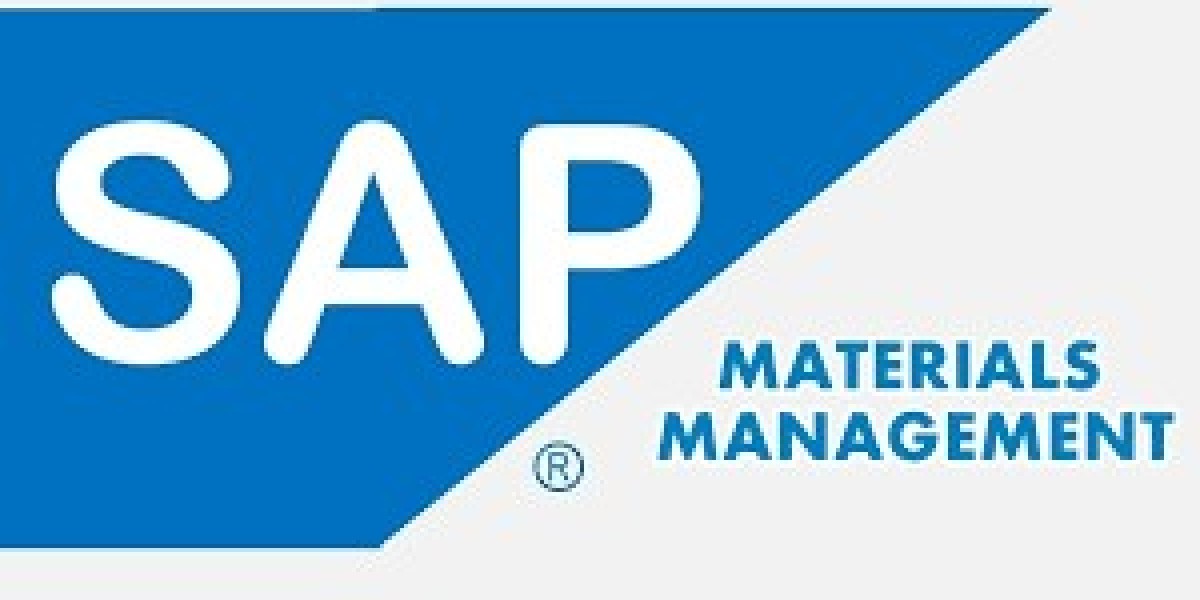SAP Materials Management (MM) is one of the essential modules of the SAP ERP system, widely used to manage a company’s procurement and inventory activities. It integrates seamlessly with other modules such as Sales and Distribution (SD), Production Planning (PP), and Financial Accounting (FI), enabling businesses to handle their supply chain processes efficiently. The main goal of SAP MM Training is to ensure that materials are available in the right quantity at the right time to meet the demand without causing delays in production or sales processes.
Key Components of SAP MM
SAP MM is divided into several sub-modules that handle specific functions:
Procurement Process
SAP MM simplifies the entire procurement process, from the creation of purchase requisitions and orders to managing suppliers and vendor invoices. The procurement process starts with identifying the need for materials, followed by selecting vendors, creating purchase orders, and then monitoring the delivery and payments.This process can be carried out using different methods, including standard procurement, subcontracting, and consignment. SAP MM also allows automatic creation of purchase orders based on predefined rules, significantly reducing manual intervention and speeding up the process.
Inventory Management
Inventory management within SAP MM ensures that the stock levels of materials are maintained optimally. It tracks all material movements, whether it is goods receipt from vendors, internal transfers, or goods issues for production or sales. SAP MM helps prevent issues such as stockouts or overstocking by providing real-time visibility into material availability and stock levels. It also supports physical inventory processes like cycle counting and stock audits, ensuring accurate records.Vendor Management
Managing vendors effectively is critical for smooth procurement operations. SAP MM includes features to evaluate vendor performance based on several criteria such as quality of goods, delivery times, and pricing. Vendors can be assigned specific material categories, and contracts or scheduling agreements can be used to streamline procurement. SAP MM automates vendor communication, including sending purchase orders and receiving invoices, making vendor management efficient and transparent.Material Requirement Planning (MRP)
Material Requirement Planning (MRP) in SAP MM ensures that materials are available when needed for production. MRP uses historical data, forecasts, and current stock levels to predict future material needs and generate purchase requisitions automatically. It helps companies balance demand and supply, avoiding production delays due to material shortages.Master Data
One of the key aspects of SAP MM is the management of master data. Material Master Data, Vendor Master Data, and Purchasing Info Records form the backbone of procurement and inventory processes. Material Master Data includes information such as material type, purchasing group, and valuation class, ensuring that every material is correctly categorized and tracked. Vendor Master Data holds the details of suppliers, including their contact information, terms, and evaluation scores, while Purchasing Info Records link vendors to specific materials.
Benefits of SAP MM
Cost Reduction
SAP MM helps organizations optimize procurement and inventory levels, reducing the costs associated with overstocking, material shortages, and procurement delays. By automating many manual processes, it reduces the risk of human errors and speeds up procurement cycles.Streamlined Operations
The integration of SAP MM with other SAP modules allows for streamlined operations across departments, leading to greater efficiency. For example, data from the Sales and Distribution (SD) module can automatically trigger procurement activities in SAP MM, ensuring that customer orders are fulfilled without delay.Improved Supplier Relationships
SAP MM provides tools to evaluate supplier performance, negotiate better terms, and manage contracts effectively. This leads to improved vendor relationships, resulting in better pricing, quality, and delivery performance.Enhanced Inventory Control
With real-time inventory tracking, businesses can optimize their stock levels, avoid stockouts, and minimize carrying costs. SAP MM also enables businesses to conduct regular stock audits and physical inventory checks, ensuring accuracy in inventory records.
Conclusion
SAP MM is a powerful module designed to handle all aspects of materials management, procurement, and inventory control in an organization. By automating and streamlining these processes, SAP MM helps businesses operate more efficiently, reduce costs, and improve overall supply chain performance. With its ability to integrate with other SAP modules, SAP MM ensures smooth collaboration across different business functions, making it an essential tool for organizations looking to optimize their supply chain and procurement strategies.







